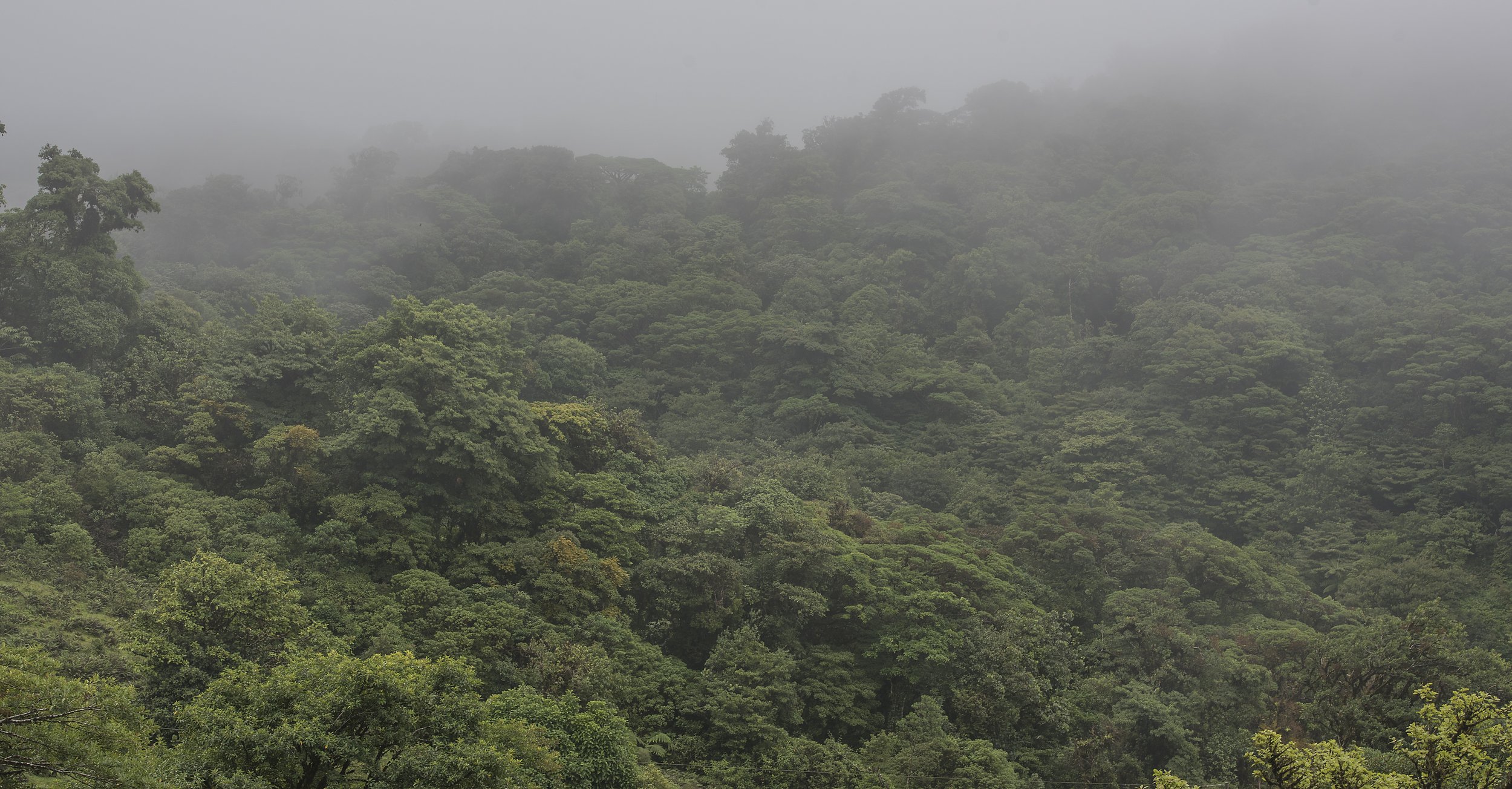Canopy Confluence
Nalini collaborates with artists of all kinds to exchange perceptions and ideas about nature, and to reach audiences who might never visit an academic campus or science learning institution. Her approach is to work with artists in the field, and then perform/present results in the venues where people interested in the arts naturally gather: an art gallery, rap music theater, or modern dance performance.
Views from Above: Old Trees, New Perspectives
Branching Out for Conservation
A National Geographic Conservation Trust Project
By Nalini M. Nadkarni, The Evergreen State College
President, The International Canopy Network
The Forest Canopy Project is part of a larger vision for forest conservation that goes beyond traditional approaches. This project was designed to awaken awareness of the multiple and complementary values of forest organisms and interactions. Our objectives were to understand how to measure and integrate the ecological, economic, and aesthetic values of forest canopies.
In the summer of 2002, we assembled an interdisciplinary team of scientists and non-scientists to examine these values in pristine and human-affected forest stands at Ellsworth Creek, a holding of The Nature Conservancy in southwestern Washington State.We invited professional forest biologists, managers, and nature artists who documented scientific, economic, and aesthetic values of forest canopies, and a group of “forest novices” – people who historically lack exposure to forests, and therefore can provide us with new and potentially important insights.
Specifically, the group included: a) ecologists, who measured canopy structural diversity and moss diversity; b) traditional forestry workers; c) nature artists, who articulated the aesthetic/spiritual values; d) inhabitants of polar regions (Inuits from Nunavut, Canada, a tundra habitat), who have been culturally exposed to a treeless landscape; e) blind people who have not experienced forests in the same visual ways as sighted people. We set up a camp at the study site for two weeks in July/August, 2002. Canopy access techniques included single-rope techniques to get access to the four hanging platforms we constructed, modelled after mountain-climber platforms.
The 28 participants captured the multiple values of the forest canopy, which were documented with audio and visual taping. Each individual was given a notebook and time was set aside for journalling each day. The National Geographic Society sent in a film crew, and the resulting piece will be aired on “National Geographic Today”, April 8-9, 2003). Ecologists took data; artists made paintings; musicians made music. We held frequent discussions on what each person was experiencing and understanding and “debriefed” around the campfire each night, listening to each others’ insights and incorporating them into our own.
The insights from the forest novices were of special interest. Discussing forests with people who have rarely or never enountered trees was a novel experience that allowed those of us familiar with trees to see them with a renewed sense of wonder. The questions that arose from our Inuit participants and blind colleagues seemed fresh and insightful, rather than naïve. The Inuits had a deep sense of the values of trees – especially the large old-growth western red cedar trees – that exactly paralled those of the cologists who have been living and working in such forests all their lives. The ways in which the blind participants overcame the challenges of climbing without the benefit of sight was an inspiration to all, and provided a hopeful metaphor about how we might overcome the challenges of conservation in an increasingly human-dominated world.
We are now disseminating these activities. The first formal exhibit of art and music was a show entitled “Branching Out: New Views of Trees and Forests”, as part of the Art/Science Chautauqua at The Evergreen State College (April 8-13, 2003), in Olympia, Washington. We anticipate applying this approach to other forest canopies in other forest types around the world by linking to other researchers and study sites. This could provide a model approach for other emerging areas of science. If you are interested in more information, contact Nalini Nadkarni at The Evergreen State College (nadkarnn@evergreen.edu).
Acknowledgments: We thank John Francis and the Conservation Trust program at the National Geographic Society for support of this project. The International Canopy Network provided support and expertise. Other supporting individuals and institutions are listed on our website (www.evergreen.edu/ican).
Learn More:
Canopy Confluence Presentation (downloadable PowerPoint)

